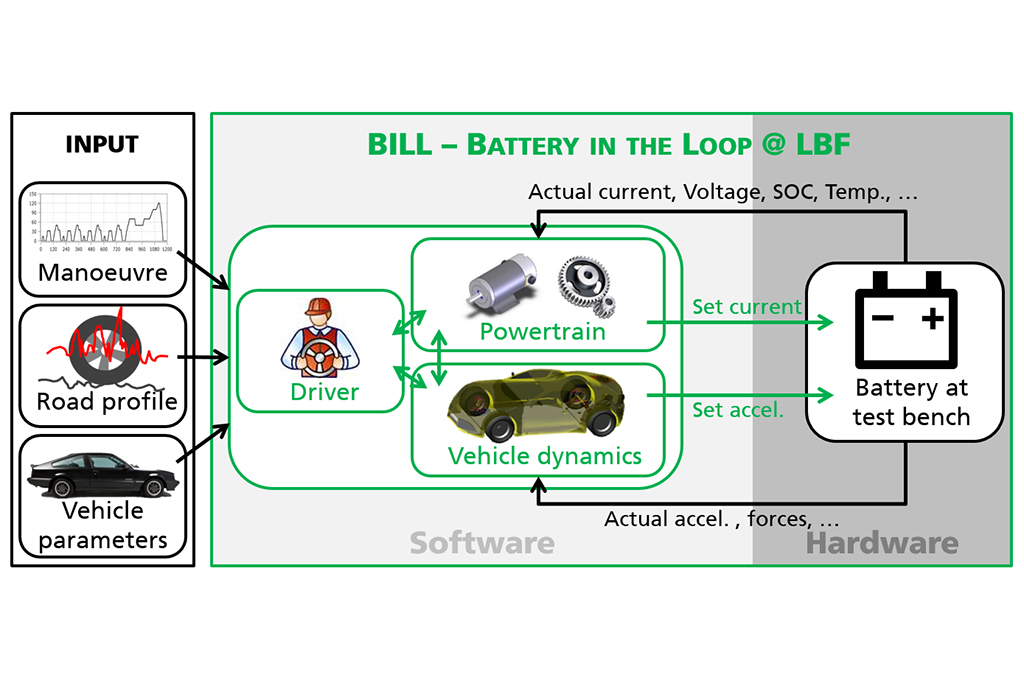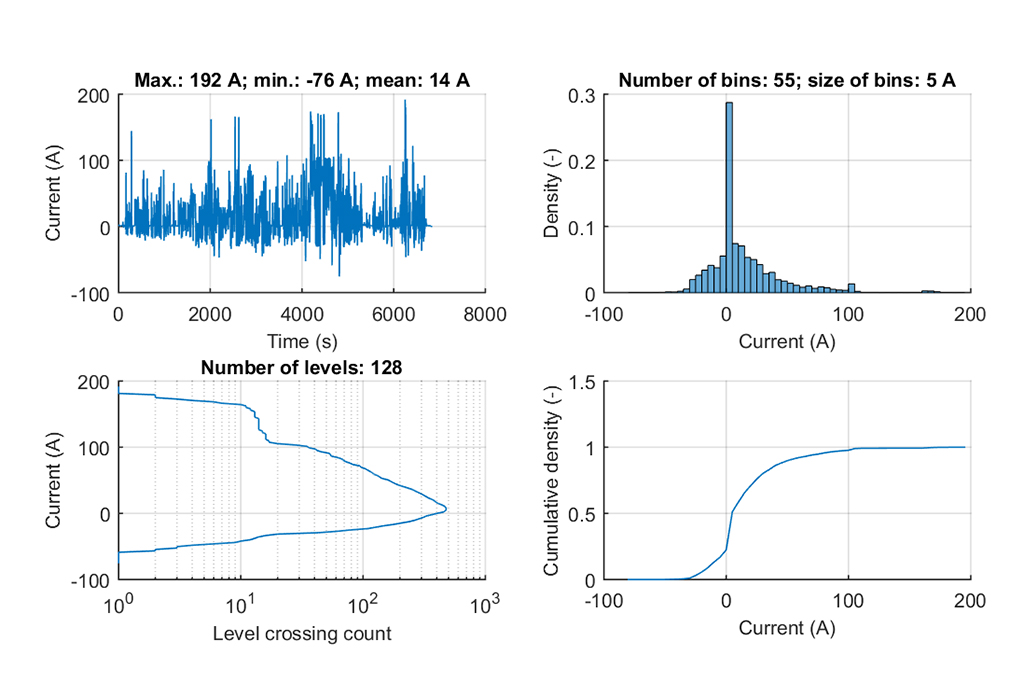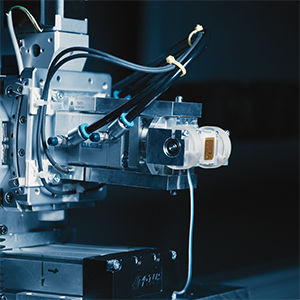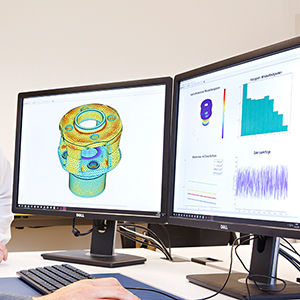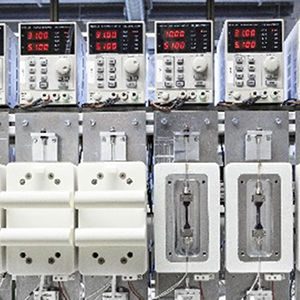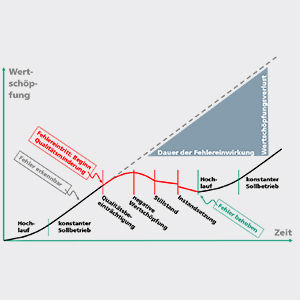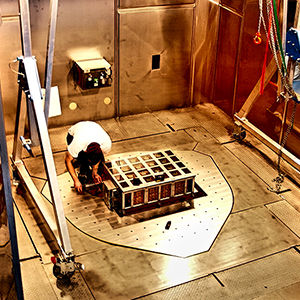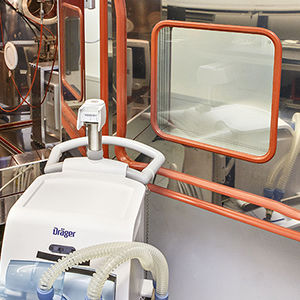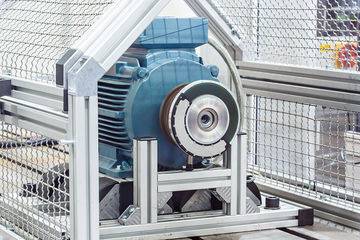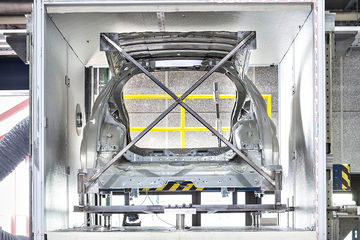Hardware-in-the-Loop Testing of Electric Vehicle Traction Batteries.
BATTERY, HARDWARE-IN-THE-LOOP, TESTING BASED ON REALISTIC conditions, DRIVING SIMULATION, VEHICLE MODEL
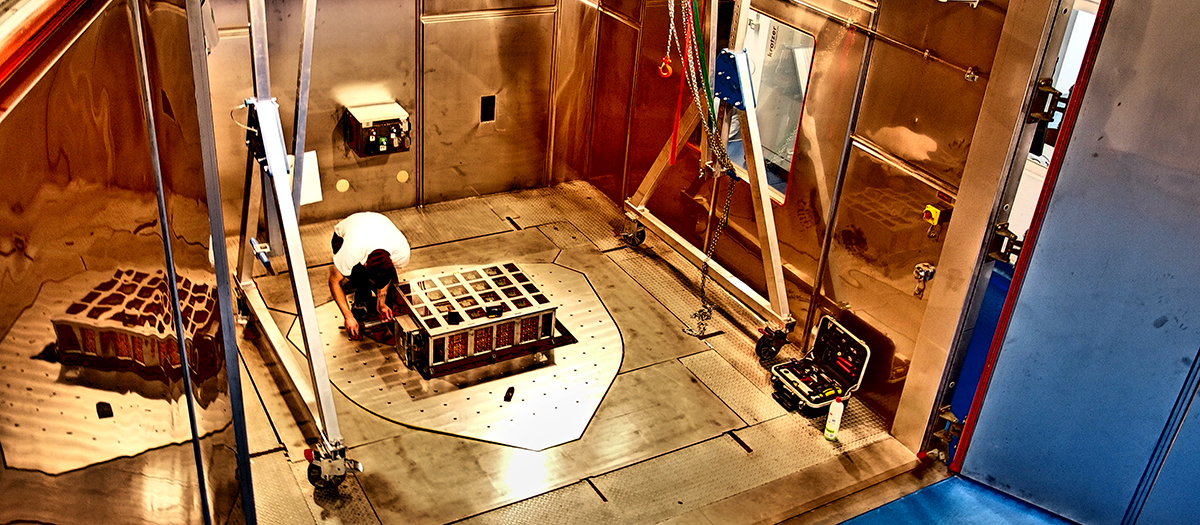
One of the key components of electric vehicles is the traction battery. Its technological development is one of the key factors in successfully establishing electromobility. Traction batteries are safety-relevant components which are subject to electrical, mechanical and thermal loading during operation. Today, battery validation and testing is carried out as a sequential process in the lab, with testing of the individual domains of loading using standardized tests. Final verification of the battery under real conditions is not carried out during test drives until the developed vehicle is available as a driving prototype.
In the conventional process for the validation and testing of the traction batteries, only the individual domains of loading are represented in standardized lab tests. However, the system test is carried out on driving vehicle prototypes first. There are various drawbacks to this process. On the one hand, it is very costly and time-consuming, especially if problems at vehicle level do not emerge until the final integration test and therefore the entire development and test loop has to be run again. On the other hand, the reference to reality of the test scenario in such conventional tests in the lab is comparatively low. In addition, the testing of various vehicle derivatives and test scenarios (i.e. maneuvers, framework or environmental conditions etc.) is restricted by the number of prototype vehicles and safety-relevant aspects.
HiL-based test environment for traction batteries
In order to overcome these limitations, Fraunhofer LBF developed a Hardware-in-the-Loop (HiL) test environment for traction batteries, which is based on real maneuvers. It is based on the integration of a detailed dynamic vehicle simulation into a multi-physical battery test bench, which ensures mechanical, electrical and thermal test conditions. The scientists developed a real-time-enabled modular vehicle simulation model in order to generate the multi-physical forms of loading that have an impact on a traction battery during real driving operation in real time and to activate them on the battery test specimen on the test bench. To achieve this, the vehicle simulation requires the state variables of the battery which are returned to the numerical simulation model as feedback through a HiL loop. Consumption cycles (NEDC, WLTC etc.), driving dynamics maneuvers and structural durability maneuvers (rough roads, driving over potholes etc.) are simulated as real maneuvers.
The developed test environment enables a progressive integration of the hardware components (i.e. battery and test bench) in a platform based on numerical simulation. During the first stage, simulation models of the battery and test bench are coupled with the vehicle simulation in order to carry out initial purely numerical conceptual analyses at a workstation. During the second stage, system simulation is carried out on the target HiL hardware with real I/O communication interfaces in order to test the real-time capacity of the application and the signal interfaces. Then the electrical domain of the test is integrated. During this process, the battery and an electrical HV test bench are physically present and connected via HiL. The final integration stage involves the mechanical and thermal domains by integrating the multi-physical test bench.
Early-stage testing based on realistic conditions
This approach enables the generation of multi-physical loading for different virtual vehicles so that the battery test specimen can be subjected to experimental testing in the lab based on realistic situations for corresponding vehicle derivatives without physical vehicle prototypes. It is possible to achieve extreme test scenarios that are highly reproducible, viable and reliable. The digitization of individual steps in the testing process enables the entire testing process of traction batteries to be structured in modular format as well as shortened and thereby made more economical for the battery manufacturers and the OEM.
Contact
- Ph.D. Riccardo Bartolozzi
- Phone: +49 6151 705-8264
- riccardo.bartolozzi@lbf.fraunhofer.de
